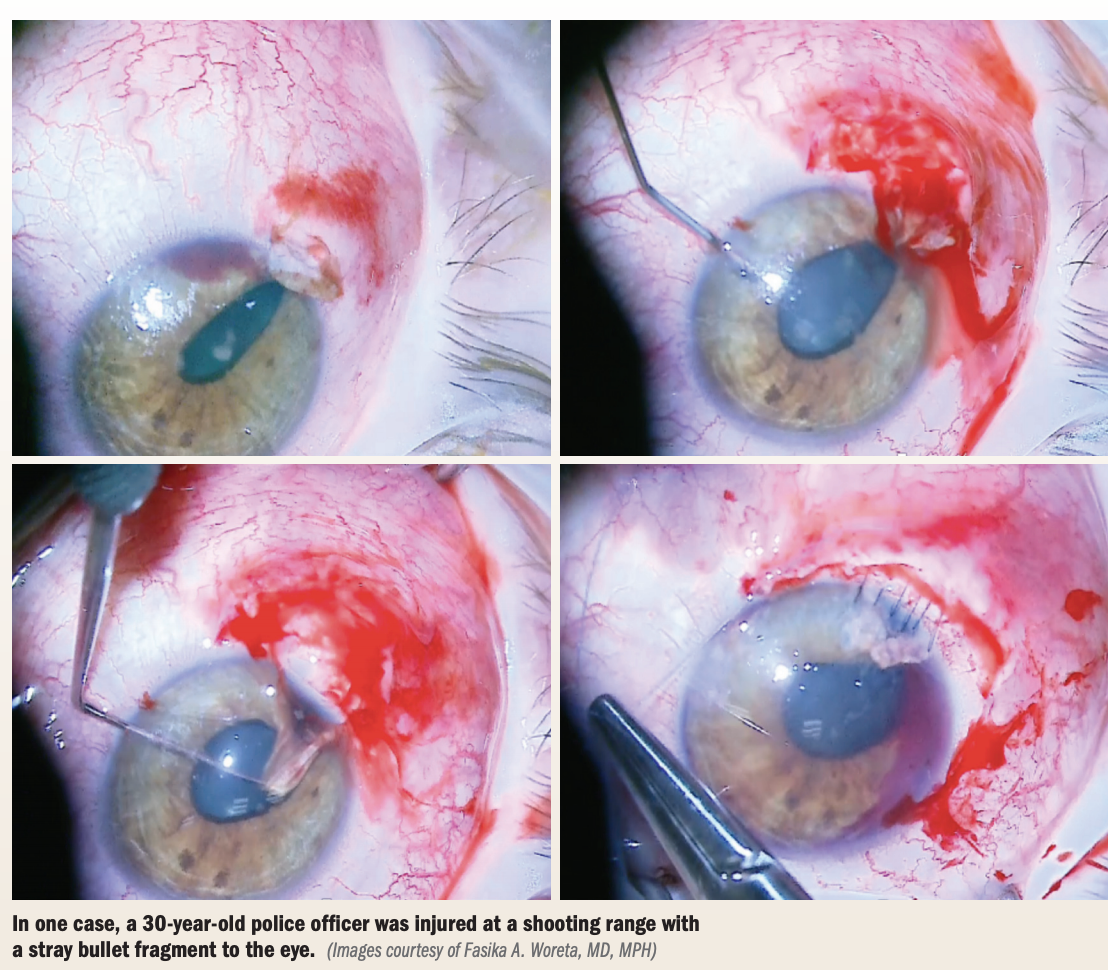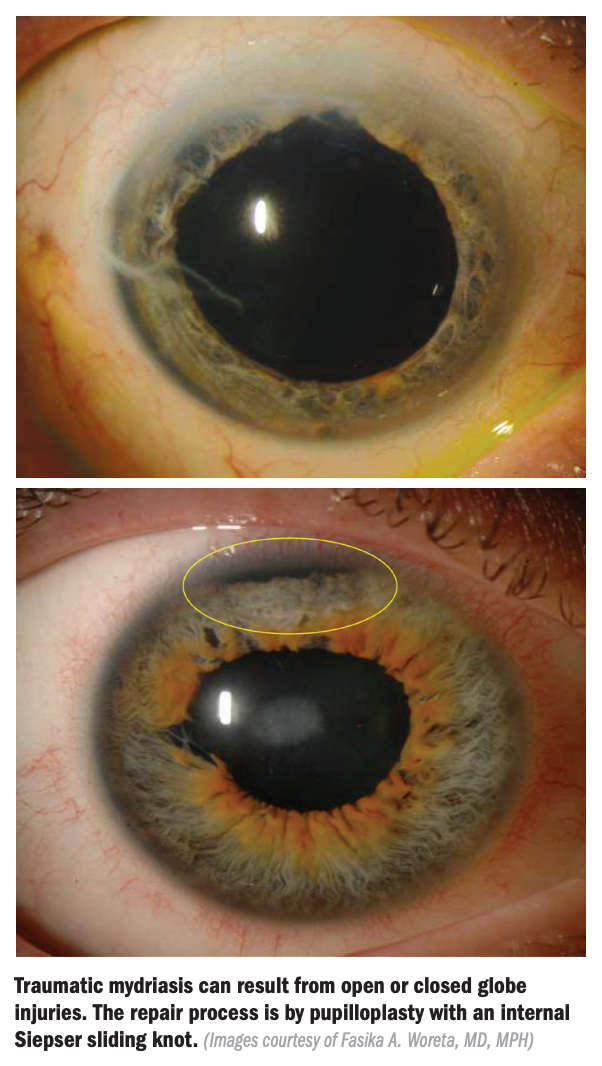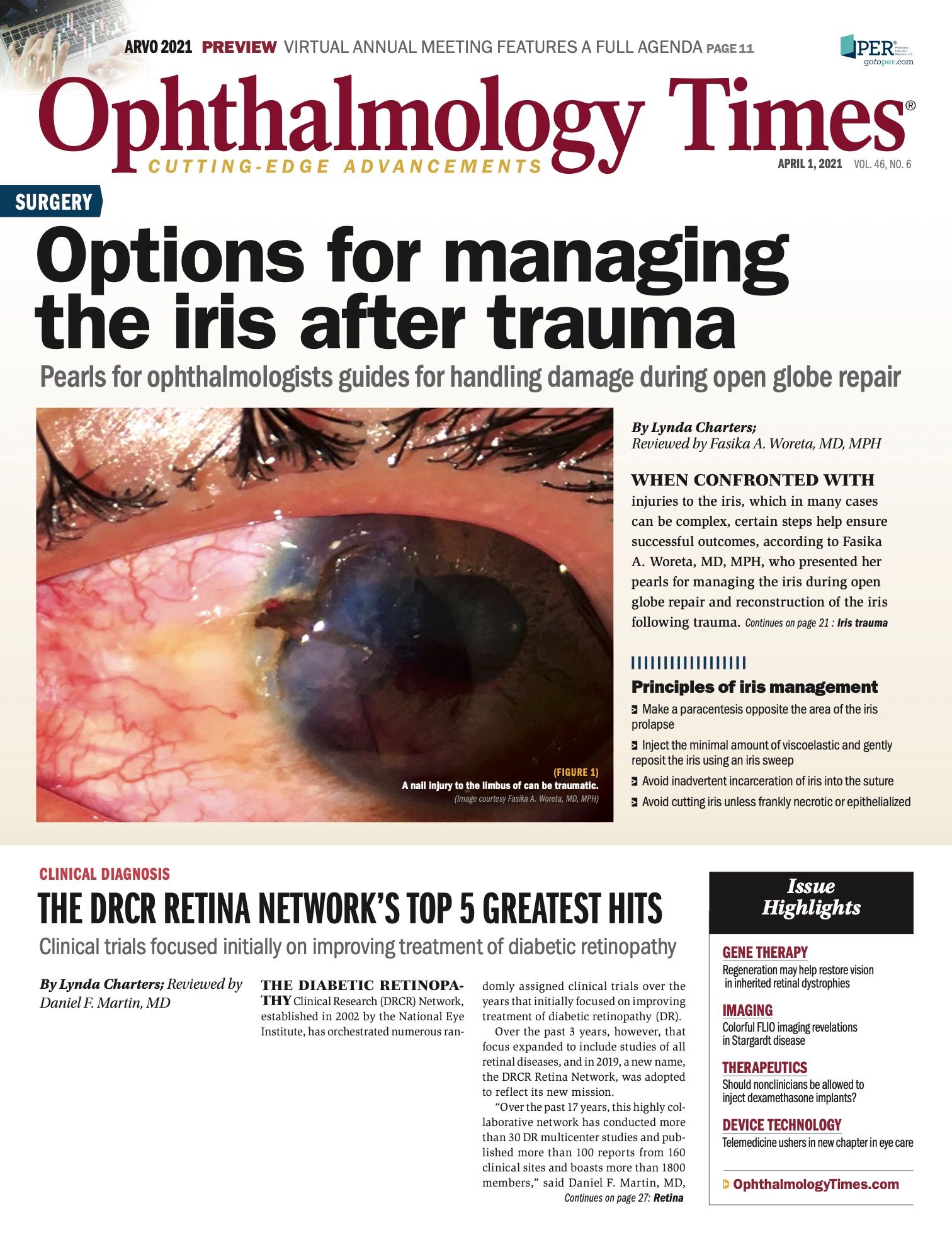Publication
Article
Digital Edition
Options for managing the iris after trauma
Author(s):
Pearls for ophthalmologists guides for handling damage during open globe repair.

This article was reviewed by Fasika A. Woreta, MD, MPH
When confronted with injuries to the iris, which in many cases can be complex, certain steps help ensure successful outcomes, according to Fasika A. Woreta, MD, MPH, who presented her pearls for managing the iris during open globe repair and reconstruction of the iris following trauma.

Iris prolapse
In cases of open globe injuries when there is iris prolapse, Woreta advises making a paracentesis opposite to the area of the prolapse; this is followed by injection of a minimal amount of a viscoelastic and gentle repositioning of the iris using an iris sweep.
Injecting excessive viscoelastic can result in increased pressure and additional iris prolapse.
Related: Making sutureless double-needle scleral IOL fixation technique more accessible
“An important point in such cases is to avoid inadvertent incarceration of the iris into the suture as well as to avoid cutting the iris, except in cases in which it is frankly necrotic or epithelialized because the iris tissue can be used for future reconstruction,” said Woreta, an assistant professor of ophthalmology and director of the Eye Trauma Center at Wilmer Eye Institute, Johns Hopkins Medicine in Baltimore, Maryland.

Woreta described a case in which a 30-year-old police officer was hit in the eye by a stray bullet at a shooting range.
The patient sustained a full-thickness corneal laceration at the limbus with iris prolapse.
The reparative steps in this case followed those mentioned previously: creation of a paracentesis opposite the area of prolapse, injection of minimal viscoelastic, and iris sweep.
Before any corneal sutures are placed, the iris may prolapse again after the sweep and so placing a few sutures before sweeping may be necessary.

Iris reconstruction
Traumatic mydriasis
Traumatic mydriasis can result from open or closed globe injuries.
Woreta described a case with an iris sphincter tear a superior iridodialysis, which is defined as separation of the iris from its attachment to the ciliary body, and a traumatic cataract. Diffuse dilation also can occur following trauma.
“In these cases, if the patient is symptomatic, surgical repair can be performed at the time of the cataract surgery,” Woreta said. “The repair process is by pupilloplasty with an internal Siepser sliding knot.”
When performing a pupilloplasty, a 9-0 or 10-0 Prolene suture on a long CTC needle is first passed through a paracentesis at the limbus. It is important to move the needle side to side in the paracentesis to ensure no cornea tissue has been inadvertently caught.
MaxGrip forceps through a paracentesis can be used to stabilize the iris for passage of the suture.
Related: Managing strabismus after retinal detachment surgery
A loop is then externalized through the paracentesis and a Siepser knot is tied. If the iris assumes a keyhole appearance, a second bite may be necessary to eliminate the small second created opening.
Iridodialysis
Woreta described a patient with a superior iridodialysis that extended several clock hours.
In some cases, a iridodialysis may be small, cause no symptoms, and be obscured by the superior eyelid.
An iridodialysis that is symptomatic can cause diplopia or polycoria, glare, or photophobia require surgery.
When surgery is required, there are 2 ways to proceed.
In the first case, the iridodialysis can be corrected by creating a scleral flap; 9-0 or 10-0 Prolene sutures on double-armed Drews needles are passed through a paracentesis created on the side opposite to the site of the iridodialysis.
The sutures are threaded internally in the eye using a 27-gauge needle to dock and externalize the sutures, which then are tied under the scleral flap.
Related: Making sutureless double-needle scleral IOL fixation technique more accessible
According to Woreta, second approach is to perform the surgery using a Hoffman pocket to avoid creation of a peritomy.
Aniridia
In cases of extensive traumatic aniridia, implantation of an artificial iris (Customflex artificial iris; HumanOptics) may be possible.
This device, approved by the United States Food and Drug Administration, is 12.8 mm in diameter with a pupil diameter of about 3.35 mm.
The device is customized to match the color of the patient’s fellow eye. The device can be trephined to ensure a perfect fit in the patient’s eye.
Currently, the cost of the device can be prohibitive, which is the main disadvantage, and it is not covered by insurance in all cases.
--
Fasika A. Woreta, MD, MPH
e:fworeta1@jhmi.edu
Woreta has no financial interest in this subject matter.

Newsletter
Don’t miss out—get Ophthalmology Times updates on the latest clinical advancements and expert interviews, straight to your inbox.




